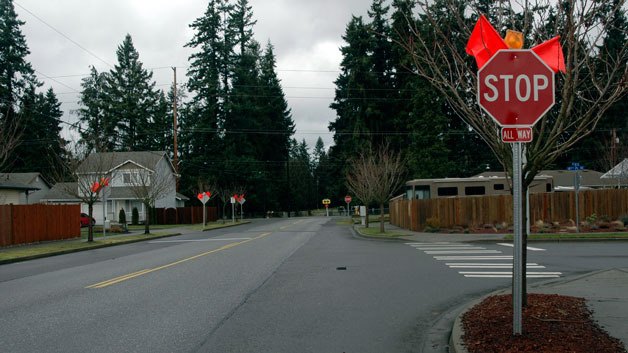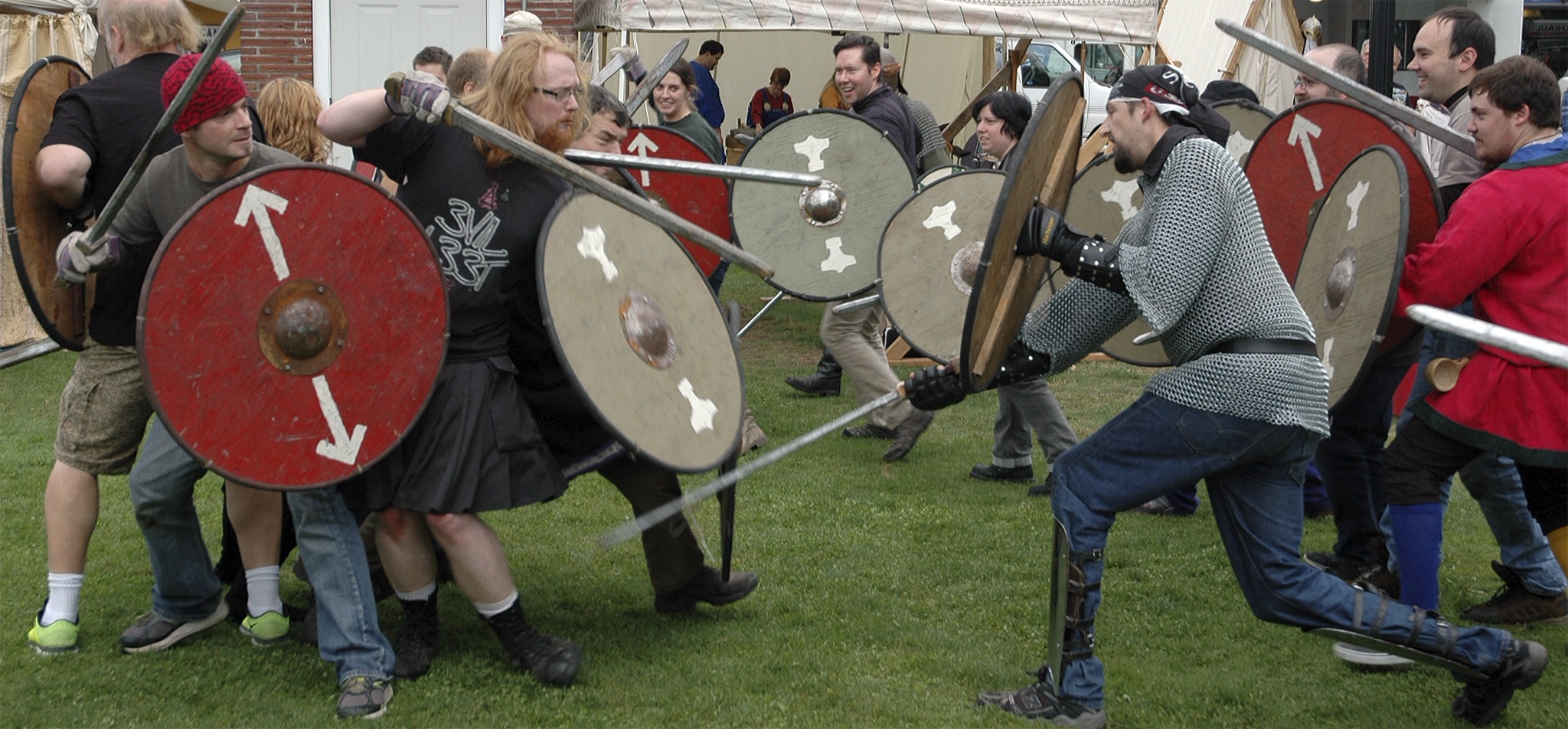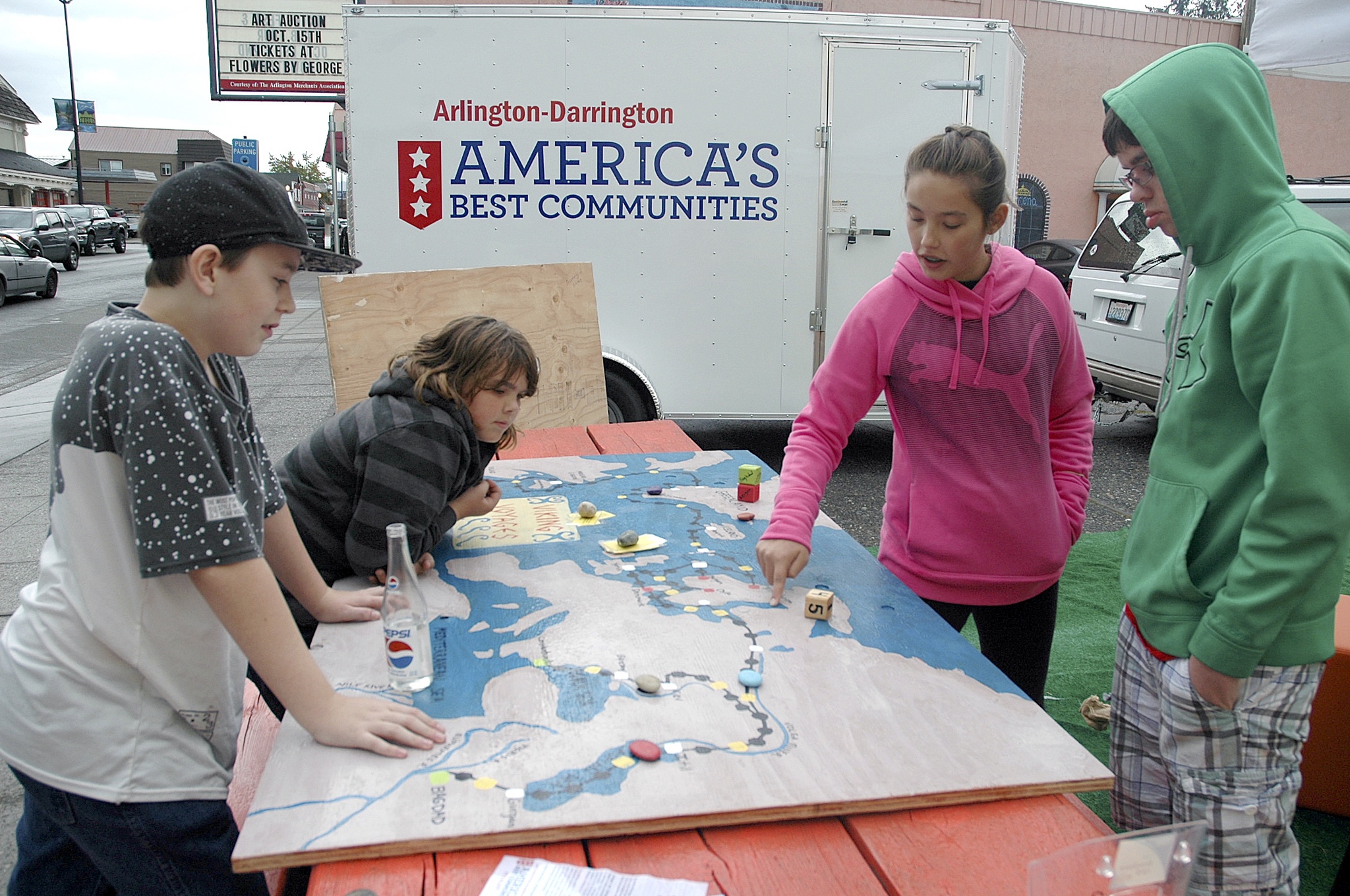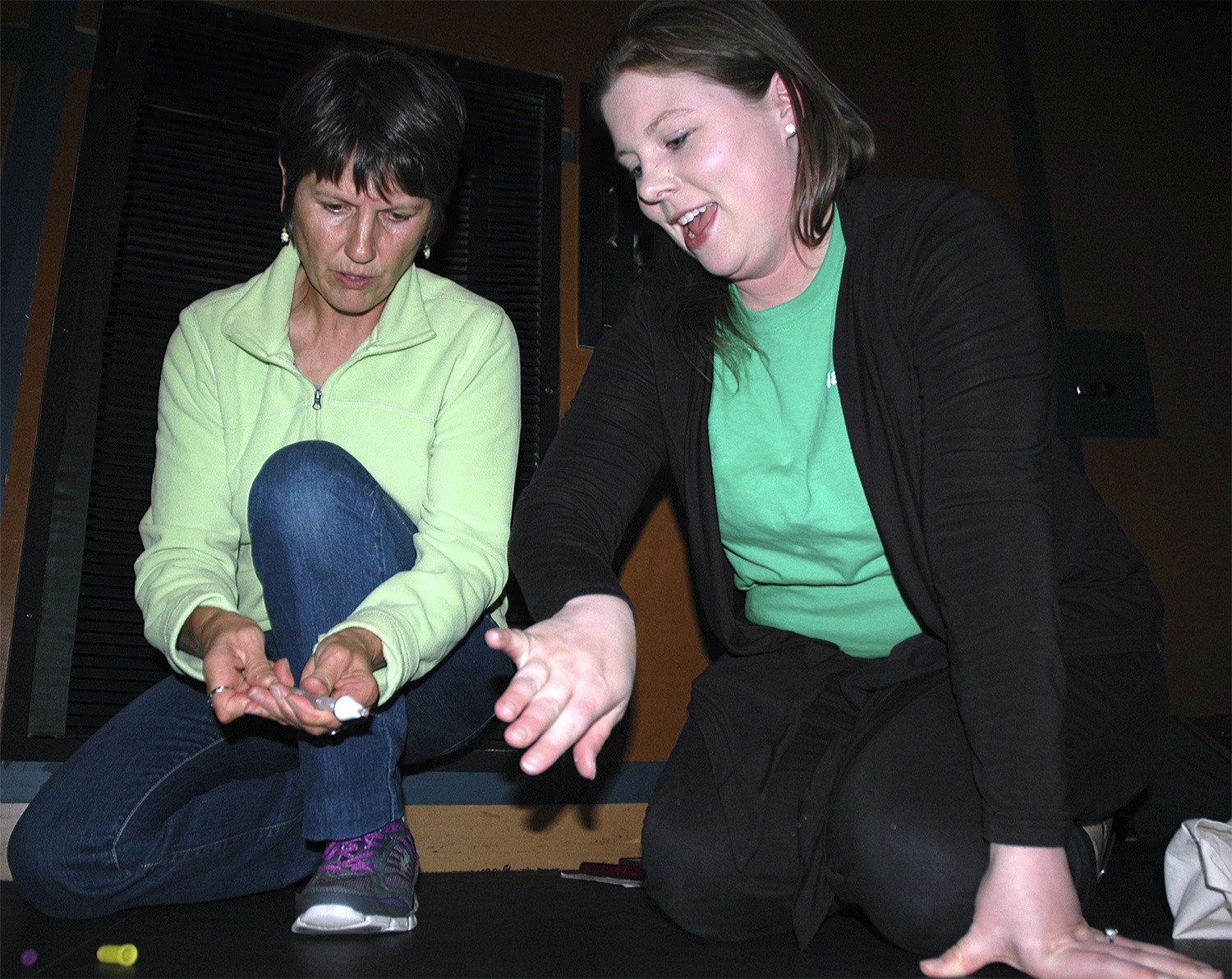SMOKEY POINT — While not everyone is as happy with it, the residents of the neighborhood streets branching off 35th Avenue in Smokey Point are pleased with the city of Arlington for promptly implementing an eye-catching measure that they hope will make their street safer.
Kay and Bob Heller live on 187th Place NE, just off 35th Avenue, and as the Costco was built in Lakewood and the new Walmart store was built just east of Smokey Point on 172nd Street, they realized that the number of people who had already been using 35th Avenue to get between 188th Street and Smokey Point Boulevard was multiplying.
“We have 106 families living on this tiny little street and the cul-de-sacs along it,” Kay Heller said. “We could see the growing traffic using this tiny street was increasing, as drivers were using it as a shortcut to work and home again.”
The Hellers began by calling up individual businesses whose vehicles they knew used the road, asking them to stop using the 0.2-mile-long corridor of their residential neighborhood as a high-speed detour. When that failed to yield results, they turned to the Arlington Police Department for aid. Given the street’s 35-mile-per-hour speed limit and the stop sign at its north end that the Hellers saw being run constantly, Arlington Police Cmdr. Terry Quintrall suggested that the Hellers and their neighbors approach their problem from a planning and engineering perspective instead.
“Bob Steiner and I went to an Arlington City Council meeting back in September to ask for help,” Kay Heller said. “Within days, the city’s planning and engineering departments had traffic counters laid.”
Following this community input at the Sept. 20 meeting, Arlington Public Works Director Jim Kelly tasked his employees with studying traffic on 35th Avenue. They found that of the roughly 4,800 vehicles that used 188th Street on a daily basis, an average of 4,100 of those vehicles a day used 35th Avenue as a shortcut to Smokey Point Boulevard.
“Those city workers had to run across the street just to place their road metering devices,” Bob Heller said. “They couldn’t believe how fast those cars were going.”
Based on these findings, city planners and engineers assembled options to try and remedy the situation, which they then proposed to the 35th Avenue corridor community. The Hellers distributed fliers to their neighbors, which allowed residents to indicate their support for one of the five proposed options, which included taking no action, installing speed bumps or humps, closing access to 35th Avenue to all traffic except local residents and buses, restructuring the intersection, or installing three-way stop signs at the intersections of 35th Avenue with 184th, 186th and 187th places. The fliers also allowed residents to indicate whether they would support lowering the street’s speed limit from 35 to 25 miles per hour.
“We passed those out to all 106 homes,” Kay Heller said. “It wasn’t unanimous, but our neighborhood came out in favor of adding three-way stop signs to the three east-side cul-de-sacs.”
Community members submitted this input to Kelly during a public meeting at the Stillaguamish Senior Center on Nov. 18, which also resulted in the street’s posted speed limit being decreased from 35 to 25 miles per hour on Nov. 22. Stop signs were placed at the intersections on Dec. 21, and white lines were painted on the street at the stop signs on Dec. 24.
Bob Heller believes that the traffic flow on 35th Avenue has already been reduced by as much as two-thirds, although he and Kay agreed that there are still motorists who blow the stop signs, some of whom the Hellers have heard honking their horns impatiently at the measure.
“The city acted quickly and this street is forever changed,” Kay Heller said. “I was proud of my city for their actions on behalf of the safety of our community.”
At their Jan. 10 workshop meeting, a number of Arlington City Council members were less sanguine about the media attention that this measure has attracted. Chris Raezer expressed embarrassment over the KOMO TV news coverage of the stop signs, while fellow Council member Steve Baker asserted that the street’s new abundance of stop signs and traffic flags has made it more confusing and hazardous.
Kelly informed the Council that night that more traffic counts will be taken in February. In the meantime, the Hellers have a laundry list of people they want to thank, from the Council and the mayor to Kelly and Quintrall, right on down to the police department’s enforcement officers and the city’s road and maintenance crews.
“We were also proud of the many families who participated in this measure for the sake of everyone’s safety,” Kay Heller said. “It truly was a positive experience.”







